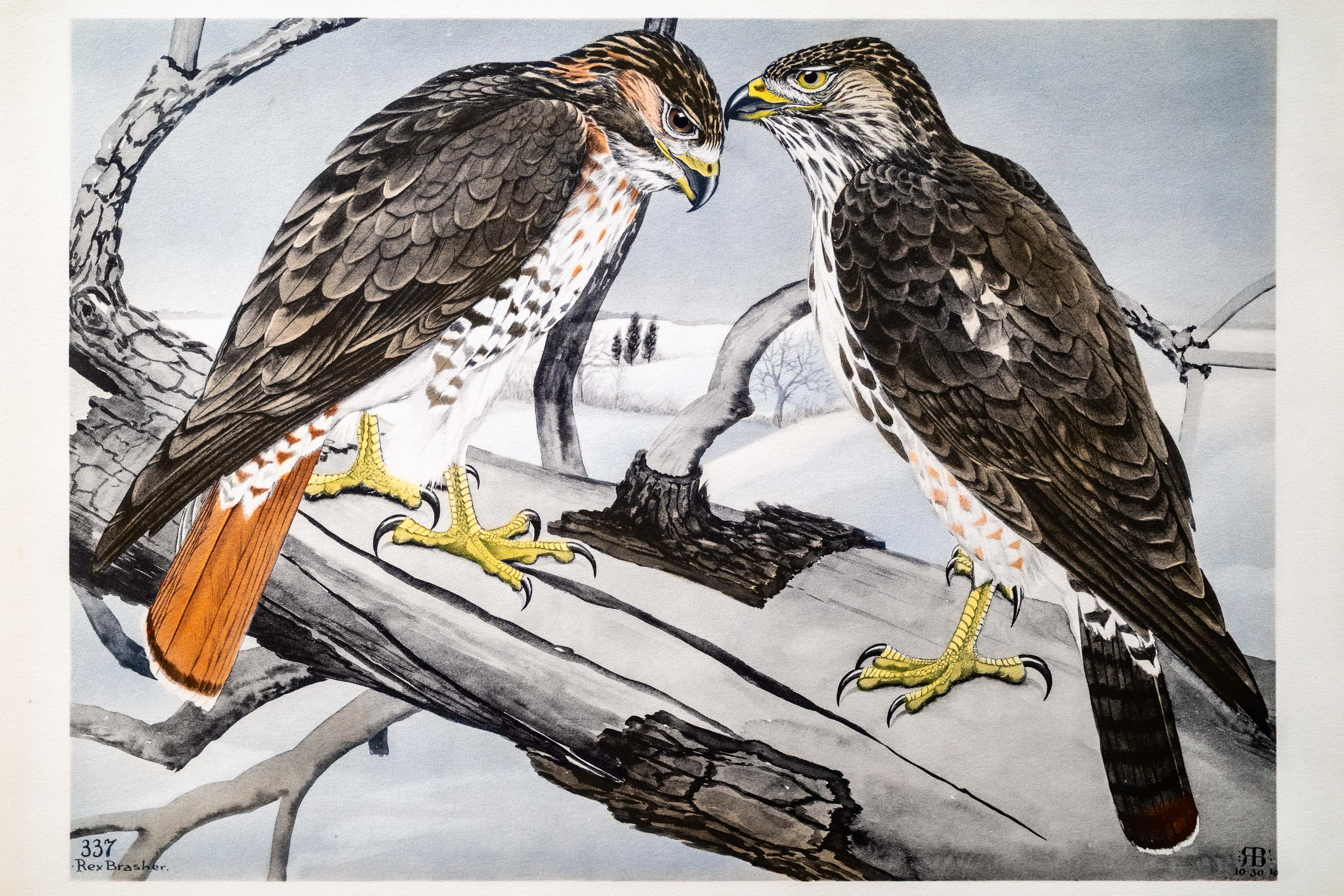
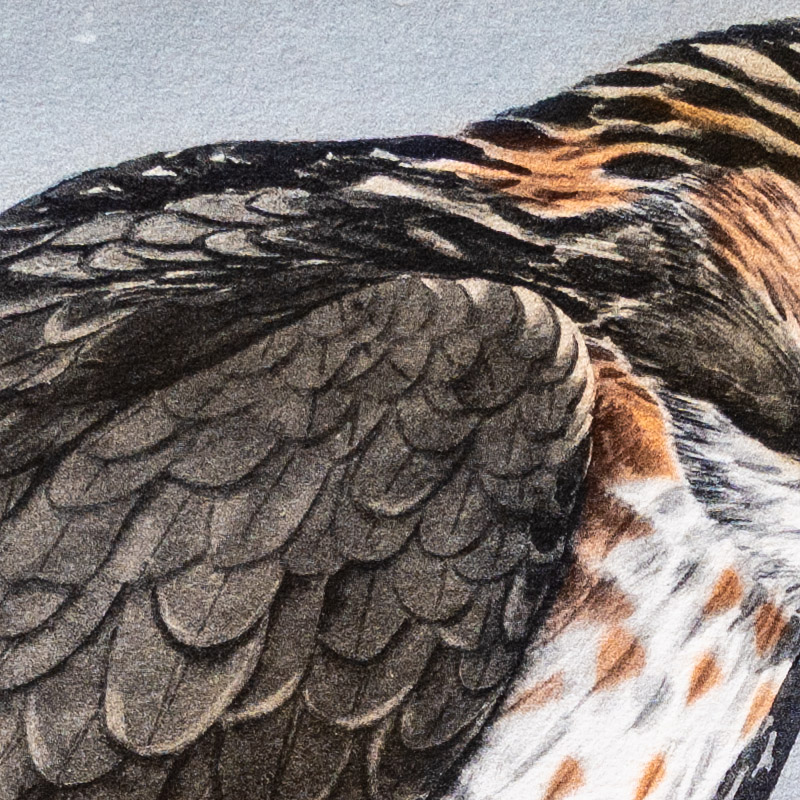

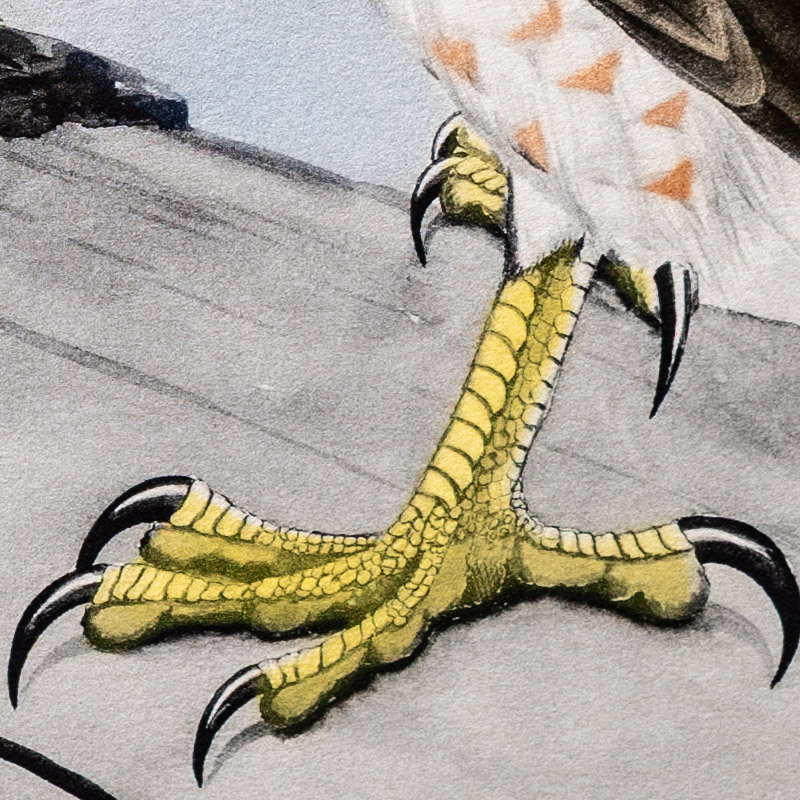
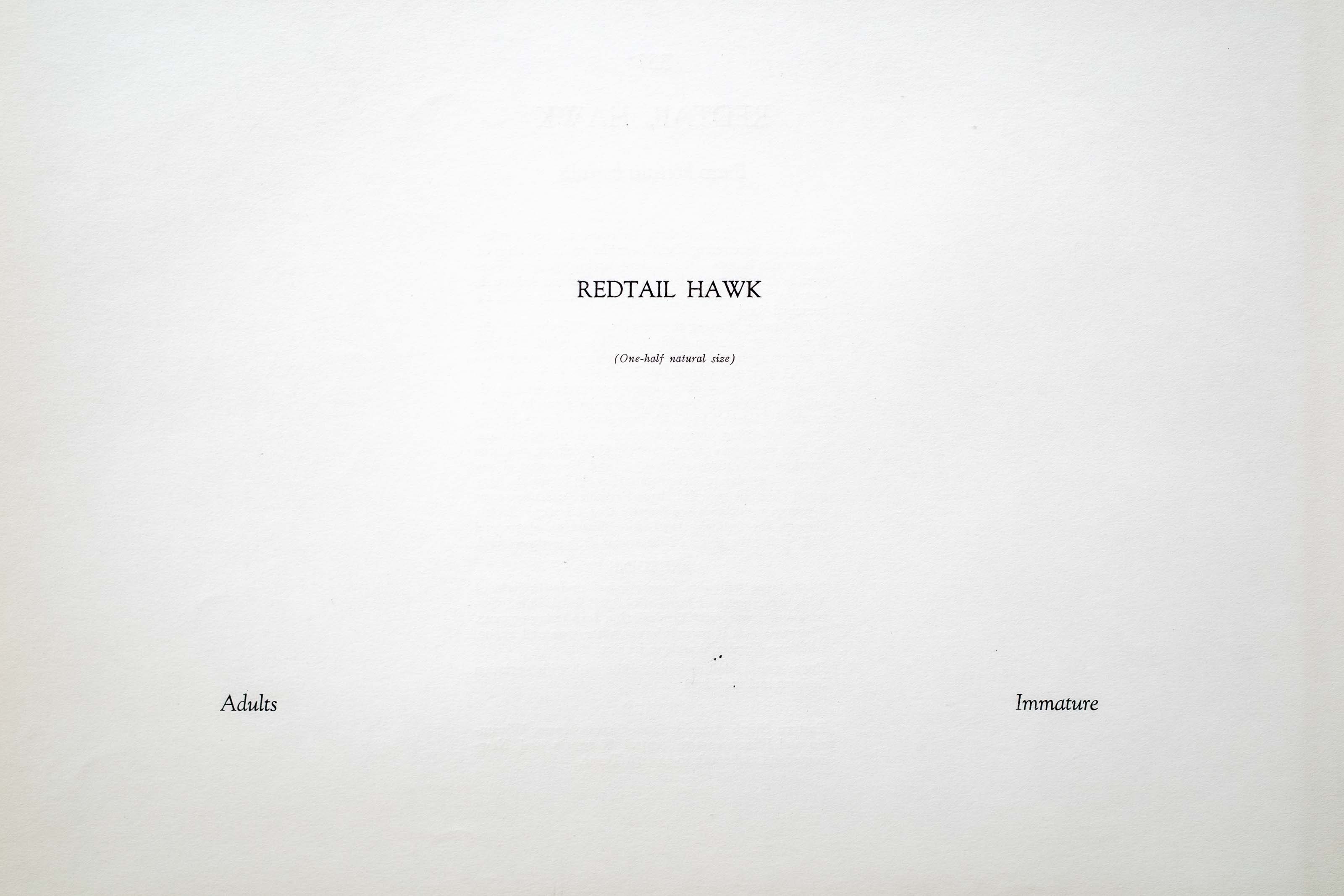
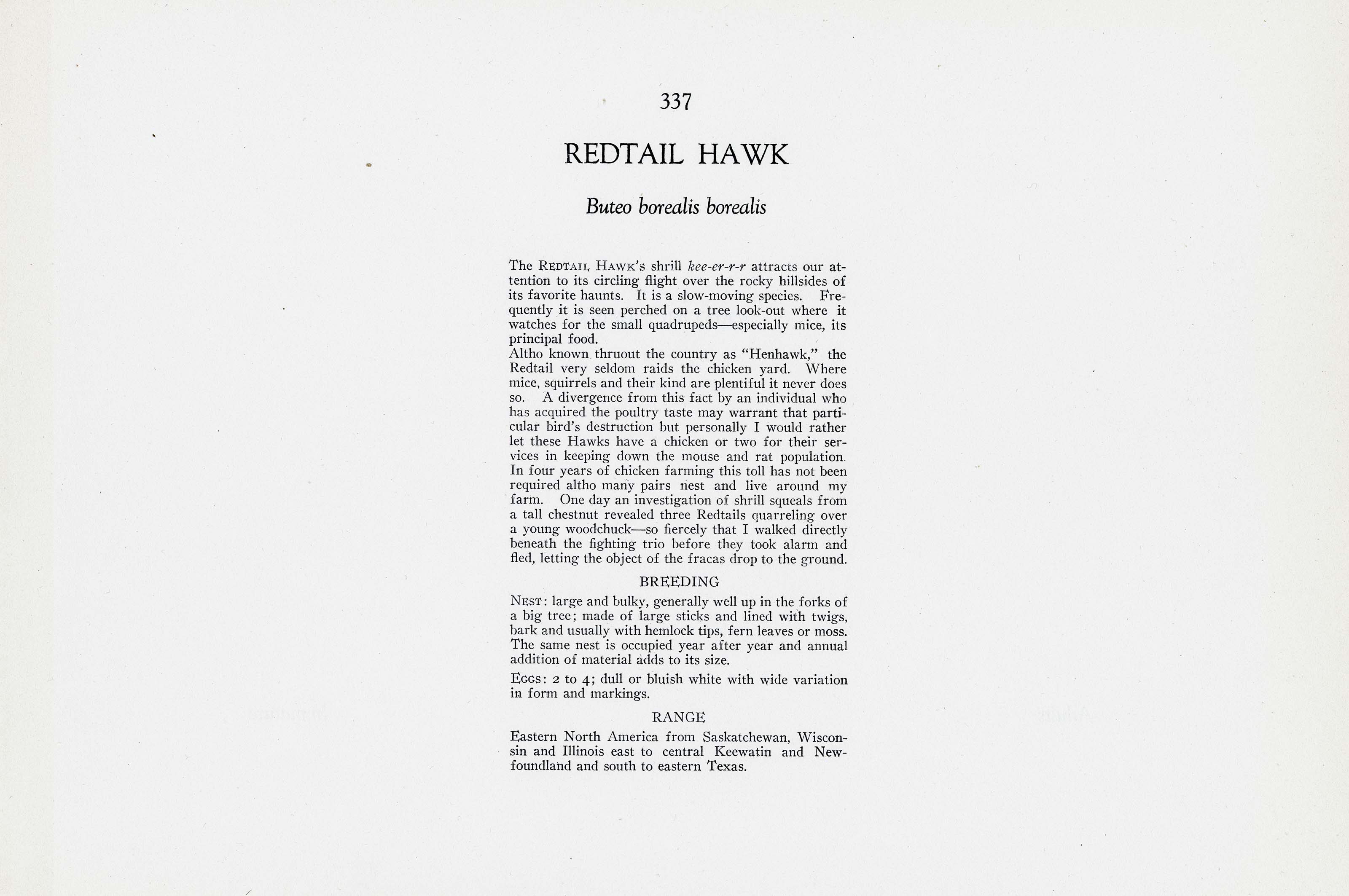

1910
1930
5
337
A team of dedicated board members, volunteers, and student interns has published every page in Volume 9. This volume includes 360 images of paintings and lyrical descriptions of birds, now available online for everyone to enjoy anywhere in the world. This is a monumental task. Each volume requires approximately 400 hours to photograph, edit, transcribe, catalog, and publish online. We need your support to complete this work.
If you're tech-savvy, have a good eye, are meticulous with details, and love structured data, please consider volunteering by emailing us at hello@rexbrasher.org.
We encourage all bird lovers and supporters to consider a monetary donation to support our mission to make Rex's work available for everyone. You can provide a one-time or recurring donation online.
The REDTAIL HAWK'S shrill kee-er-r-r attracts our attention to its circling flight over the rocky hillsides of its favorite haunts. It is a slow-moving species. Frequently it is seen perched on a tree look-out where it watches for the small quadrupeds — especially mice, its principal food.
Altho known thruout the country as "Henhawk," the Redtail very seldom raids the chicken yard. Where mice, squirrels and their kind are plentiful it never does so. A divergence from this fact by an individual who has acquired the poultry taste may warrant that particular bird's destruction but personally I would rather let these Hawks have a chicken or two for their services in keeping down the mouse and rat population. In four years of chicken farming this toll has not been required altho many pairs nest and live around my farm. One day an investigation of shrill squeals from a tall chestnut revealed three Redtails quarreling over a young woodchuck — so fiercely that I walked directly beneath the fighting trio before they took alarm and fled, letting the object of the fracas drop to the ground.
NEST: large and bulky, generally well up in the forks of a big tree; made of large sticks and lined with twigs, bark and usually with hemlock tips, fern leaves or moss. The same nest is occupied year after year and annual addition of material adds to its size.
EGGS: 2 to 4; dull or bluish white with wide variation in form and markings.
Eastern North America from Saskatchewan, Wisconsin and Illinois east to central Keewatin and Newfoundland and south to eastern Texas.